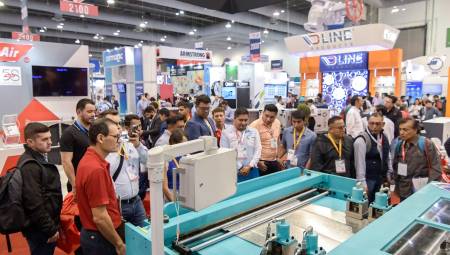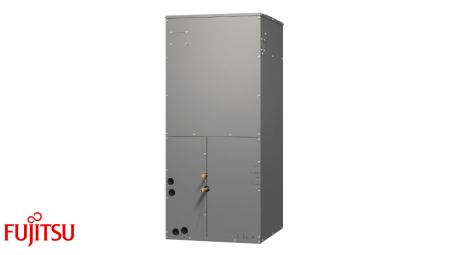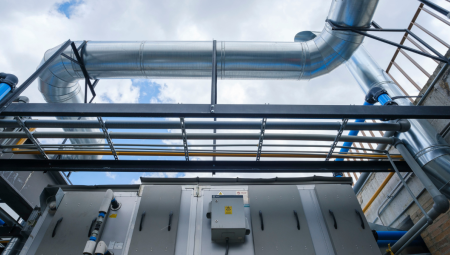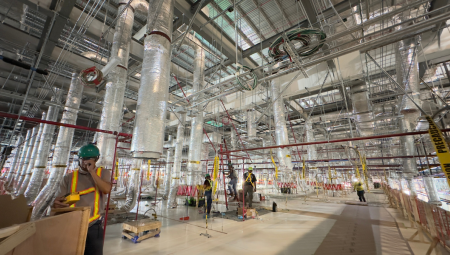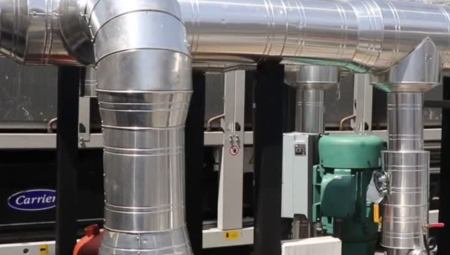Sustainable building is a design process that arises from a connection with the natural landscape. This is a set of decisions that considers the site and materials to reduce the cost, maintenance, and energy use of the home. Conservation is central to the green building approach. Eco-friendly homes are healthier, safer, more comfortable, and less expensive to operate. They connect people, the land, and the community around them. Here are seven ideas on how to make your home eco-friendly:
Build a passive solar design.
Passive solar design for natural heating and cooling is practiced worldwide under any weather conditions. As energy costs increase, it is critical to use building orientation, window placement, stone floors, eaves, reflection barriers, and other techniques for natural solar energy control.
In hot climates, the wide part of the house should be oriented to the north or south, to avoid excessive heat gain as the sun rises and falls on the horizon.
Use deep overhangs or sunscreens to protect areas of glass from direct sun. Avoid skylights or greenhouse rooms, because they allow the accumulation of excess heat.
In colder climates, solar heat can be captured and stored in materials such as concrete or stone that is slowly released overnight.
An open floor plan optimizes the effect of passive solar heating or cooling.
Doors and windows must be able to capture the prevailing breeze and allow cross ventilation.
Under the entrance windows and higher outlet windows keeps the air moving, so that the hot air rises.
A thermal fireplace uses a hot zone, such as a glass dome with windows or vents, to create increased drafts to draw air through the building.
Double-glazed panels offer an air gap between the insulating panels, which reduces heat transfer.
The low-emissivity (emissive) metal oxide layer of glass helps maintain solar heat and heat from inside.
Ventilate the attic spaces.
In hot climates, attic spaces can accumulate heat, transferring it to the areas below. The air conditioning ducts located in the attic absorb this heat.
In cold climates, moisture can accumulate in unventilated attic spaces, causing wood rot or mold.
Lighter colored roof materials absorb less heat. High levels of insulation in attics and exterior walls are crucial for comfortable indoor temperature in all climates.
Some research is being done in fully sealed, high-insulated attics.
Optimizes air conditioning and heating systems
An oversized system cools too quickly, and leaves the room cold and damp. Smaller systems in the long term reach the desired temperature, and, at the same time, clean the air of moisture.
A smaller system has a longer lifespan, doesn't turn on and off frequently, and has a lower purchase cost.
Check for leaks in duct joints, and around windows, doors, attic stairs, exhaust pipes, recessed lights, and electrical outlets. Maintenance of central air systems is necessary to prevent air loss. Use programmable thermostats to regulate energy consumption.
Reduces water needs.
The native landscape that adapts to rainfall in your area is fundamental to sustainable building. Maintain the growth of native plants in your garden.
Water permeable materials such as crushed granite or pavers allow water to seep into the soil. Rainwater harvesting systems use gutters and barrels to capture and store water falling on roofs.
Front-loading washing machines use less energy and water. Some dishwashers use less water and do not have the heat of drying. Check the amount of water and energy use before buying appliances.
Low-flow toilets and energy-saving faucets reduce water consumption.
Use renewable or recycled materials.
Consider wooden decks and plastic waste, such as Trex or other brands.
Use locally produced, easy-to-renovate materials when possible.
Consider using alternative building materials, such as rammed earth, straw, or concrete panel insulation. Concrete floors use the base material as a finish, which saves materials and labor.
Recycled wood floors are a new attraction for using materials. Bamboo floors are made from a renewable source quickly – bamboo is a herb that can grow several meters per day.
Hard surface floors are dust-free, mold-free, and allergenic, and are very durable.
Set aside a place to recycle, household waste such as a storage compartment in the kitchen, and a container in the garage.
Use safe materials:
Use products that are biodegradable, water-based.
Avoid products that contain dyes, ozone-depleting chemicals, heavy metals, formaldehyde, or known carcinogens.
Sustainable green house building is an approach to environmentally friendly design and construction and resource conservation. This is a common sense approach that is available to all homeowners.
Related Posts:
- How to Make Your Own Recycled Paper at Home
- How to Make Your Computer Faster and Consume Less Power
- Free Ecological and Sustainable House Plan
- How to Cool Your Home From The Heat
- Video: How to Make Your Own Recycled Green Wallet
Authors: Val







